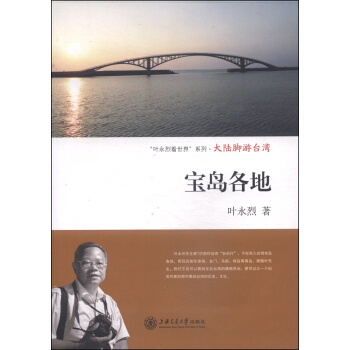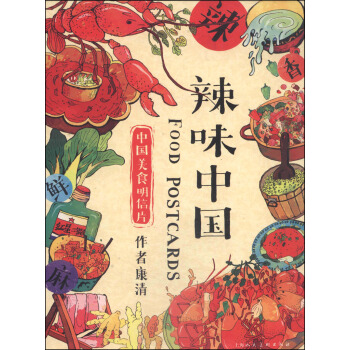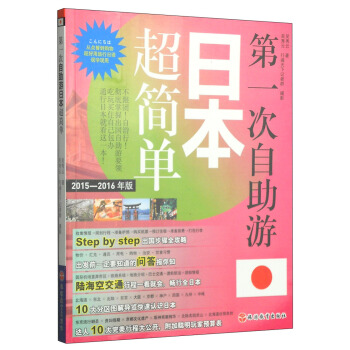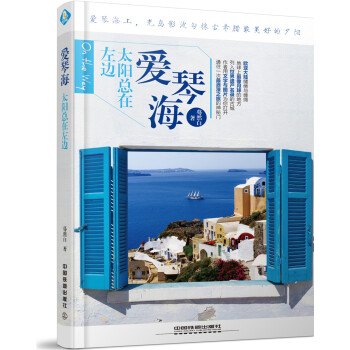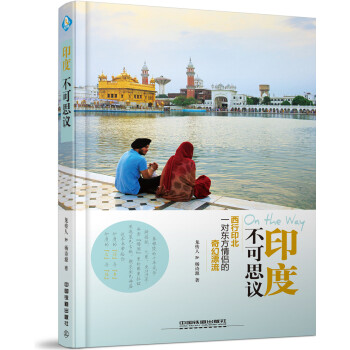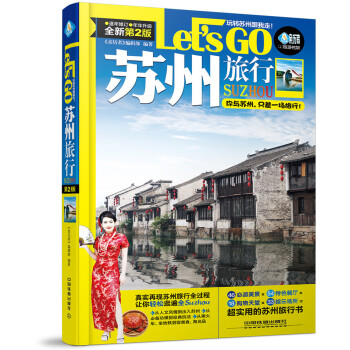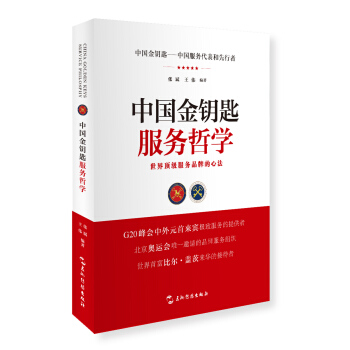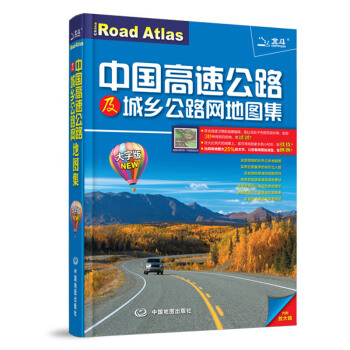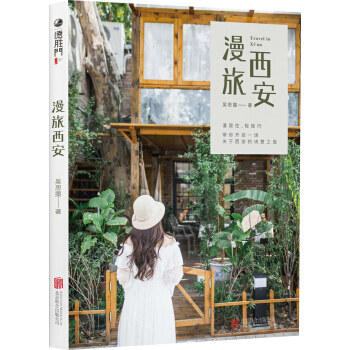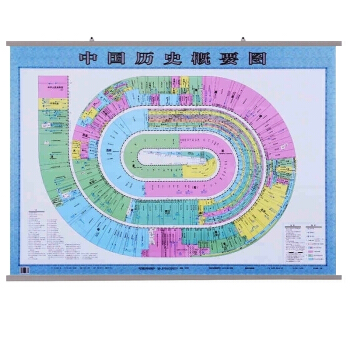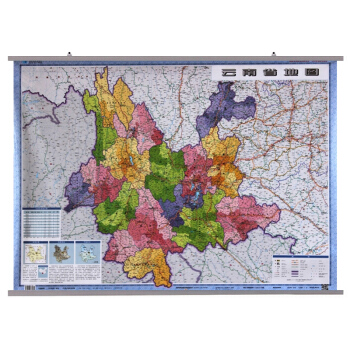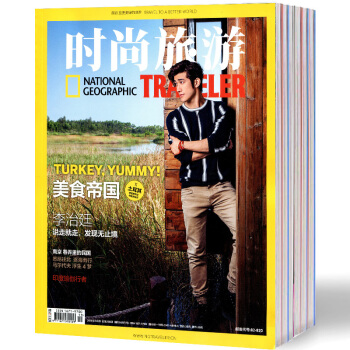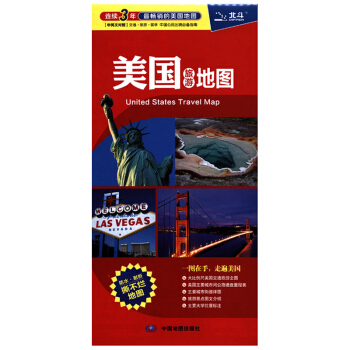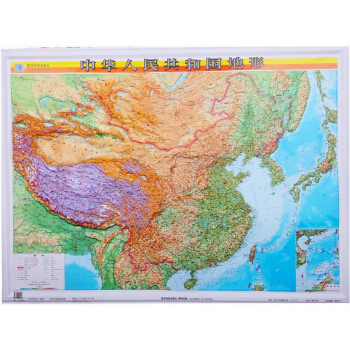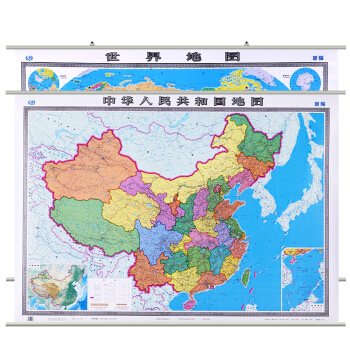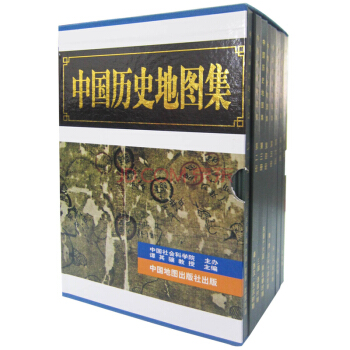![旅游指南(英文版) [China Guide: Tour in China ]](https://pic.windowsfront.com/11180454/58d1596aN2787c6bb.jpg)

具体描述
编辑推荐
“在中国”系列为指南类图书,专为来华旅游、学习工作及生活的外国朋友编写,以实用、可读性强的方式呈现中国多方面的资讯。本系列内容目前涉及旅游、投资、留学及电影文化等方面的,方便来华人员了解中国概况,从事商务活动以及留学深造等,同时介绍当下中国电影文化,引导外国人更好地融入中国本地的生活,具有很强的实用性。
内容简介
“知行,路更远”。怎样才能“知行”?对于自力更生的自助旅行者来说,好的方式只有一个:地图、地图,还是地图。针对旅游图书市场同类产品地图匮乏,局限于景点罗列的普遍弱点,编著团队发挥自身专业地图优势,结合数年旅游图书的制作经验,全力打造出这本《旅游指南(英文版)》(作者尤金·劳)。本书所有线路都经过超级驴友的实地勘察,所有地图都出自资深地图专家的倾力打造,所有资讯都在印前反复核实。
Written mostly by native English speakers who are long-term China residents and edited by people who live and work in China this book lends a fresh perspective on all things Chinese. It melds foreign and local perspectives into a seamless narrative that allows new light to be cast on China's cities.
作者简介
“在中国”系列为指南类图书,以实用、可读性强的方式呈现中国的资讯。本书为其中之一,分地区介绍了中国各地的旅游资源以及对外国人来华旅游有帮助的各种实用信息,可读性强。
Written mostly by native English speakers who are long-term China residents, and edited by people who live and work in China, this book lends a fresh perspective on all things Chinese. It melds foreign and local perspectives into a seamless narrative that allows new light to be cast on China's cities.
内页插图
目录
CONTENTS
HISTORY & CULTURE
THE GUIDE
NORTHEAST CHINA
NORTH CHINA
NORTHWEST CHINA
EAST CHINA
CENTRAL CHINA
SOUTHWEST CHINA
SOUTH CHINA
HONG KONG, MACAU & TAIWAN
BOXED TEXT
LEARN TO SPEAK CHINESE
精彩书摘
Wutai Shan, the Five Peaks of Serenity
Once a remote outpost reached only by the most pious of pilgrims who traveled for months with wills steeled by devotion, Wutai Shan remains a hidden treasure for those seeking true contemplation.
Wutai Shan’s name means “five terraces,” which accurately describes the five flat peaks of this sacred spot – north, east, south, west and central peak. In the quiet valleys between the peaks lie a smattering of ancient temples, twisting trails and aweinspiring views.
The major sights at Wutai Shan are rather spread out, forcing one to indulge in the gorgeous scenery that surrounds the five terraces. This also means that no one sight is overwhelmed with tour groups. Wutai Shan’s temples are an eclectic mix of Han Buddhist and Tibetan and Mongolian Lamaist traditions, making the mountain one of the best places in China to view Buddhist architecture.
The shrines on Wutai Shan date back to the Eastern Han dynasty, and the second Buddhist temple in China was built here at a time when Taoism dominated the area. A legend goes that a Buddhist monk beseeched the emperor to construct the Xiantong Temple (xiǎntōng sì 显通寺) on the mountain and suggested that a Taoist and Buddhist scroll each be put into a fire to test which religion was true. When the Taoist scroll was burned to ashes, but miraculously the Buddhist scroll remained undamaged, the temple was built. Later, Wutai Shan became a popular pilgrimage destination as more monasteries and temples were built in succeeding dynasties.
During the Sui and Tang dynasties, when Buddhism held imperial favor, over 360 temples were built. The mountain also became an international destination point for Buddhists from other countries as they were drawn to the many temples as centers of learning. Lama Buddhists began to settle on the mountain during the Qing dynasty. Today there are 47 temples and monasteries and they continue to draw devotees and curious sightseers.
Most of the temples are located around Taihuai, a small town nestling in valley 5,576 feet (1,700 m) above sea level. The temples on Wutai Shan are dedicated to Wenshu Pusa (Manjusri), the Bodhisattva of Wisdom and Virtue. A visiting Indian monk had a vision of Wenshu in the 1st century AD and concluded Wutai Shan to be the mystical abode of Buddha’s most important assistant. Numerous legends speak of how apparitions of Wenshu riding on the back of a blue lion have been sighted high above the monasteries.
ours normally begin at Taihuai; one daylong trip south of town allows you to visit several stylistically different temples. All temples share a transcendental aura, so if you’re looking to get away from the drab, mundane concerns of urban life, any temple will do.
108 carved granite steps (the same as the number of beads on a Buddhist rosary) lead to Dailuo Ding (dàiluó dǐng 黛螺顶), the temple that houses statues of five different forms of Wenshu Pusa, each of whom supposedly lives on a different peak. Legend has it that a young monk suggested statues representing the five incarnations of Wenshu be built here to save visiting emperors from a grueling trek. For those who want to visit the bodhisattvas but don’t have the time to make a house call, this is the place to ask Wutai Shan’s guardians for a blessing. To make things even easier, there’s now a cable car from the foot of Wutai Shan to the temple. Piety with convenience – if only the early pilgrims had it this easy.
Xiantong Temple is the largest and oldest temple on the mountain and is also conveniently located in the heart of town. It houses the amazing Beamless Pavilion (wúliángdiàn 无梁殿), which contains no beams and is supported through a complex set of interlocking pins. The impressive Bronze Pavilion (tóngdiàn 铜殿) is made from 110,000 pounds (50,000 kg) of bronze; it’s a perfect replica of a wooden pavilion, and the interior houses thousands of tiny Buddhas. Continuing on the bronze theme, the Youming Bell (yōumíngzhōng 幽冥钟) cast in 1620, is the largest bronze bell in the region: it’s 8.2 feet (2.5 m) high, 5.25 feet (1.6 m) across, and weighs 9999.5 jin, or 11,000 pounds (5,000 kg). A Buddhist sutra of over 10,000 Chinese characters decorates the body of the bell.
Behind the Xiantong Temple is the largest Lama temple on the mountain, the Pusa Ding (púsà dǐng 菩萨顶). Climb the 108 stairs to this temple and gaze out on the expansive views of Taihuai and the surrounding countryside. Tibetan and Mongolian Lamas stayed here during the Ming and Qing dynasties, believing that Wenshu Pusa once lived in the same place. The Wenshu Pavilion has an interesting feature: water is stored on the roof when it rains and on sunny days it drips down the roof.
The 164-foot-high (50 m) high Tibetan styled White Pagoda (bái tǎ 白塔), designed by a Nepali in 1301, has become a symbol of Wutai Shan. It stands on the grounds of Tayuan Temple (tǎyuàn sì 塔院寺), also in Taihuai. A marketplace forms around it with vendors selling incense, prayer beads, Buddhist booklets and bronze Buddhas.
Just 10 minutes away from Tayuan Temple is Shuxiang Temple (shūxiàng sì 殊像寺), which features a 20-foot-tall (6 m) statue of Wenshu riding a lion. The temple itself was last rebuilt in 1487. Take a short 10 minute walk southwest and the Puhua Temple (pǔhuá sì 普华寺) will come into view. The buildings here feature intricate carvings. About 2 miles (3 km) southwest is the South Mountain Temple (nánshān sì 南山寺) where 18 Ming dynasty statues of arhats (beings who have reached Nirvana) reside. Follow a packed earth trail down the hill for about 3 miles (5 km) and you’ll arrive at the Dragon Fountain Temple (lóngquán sì 龙泉寺), where 108 steps lead to an elaborate marble entrance with carvings of Buddhas, bodhisattvas, dragons and flowers. In the main hall is an exquisitely carved Puji Dagoba (pǔjìchánshī tǎ 普济禅师塔) with a laughing Buddha looking out from each cardinal direction. In the courtyard hundreds of small chimes tinkle in the wind.
Not far from the Tayuan Temple is the Luohou Temple (luómùhóu sì 罗目候寺); the present structures date from 1492. The temple features a unique circle altar where a lotus opens up to reveal a Buddha carved inside. The statue was made from a tree where an emperor saw a divine light. When the tree died during the Qing dynasty, it was carved into this lotus – a mechanism underground allows the lotus petals to be raised and lowered.
前言/序言
FOREWORD
I’ll never forget my mother’s visit to Beijing two years ago. At age 72, she was coming to China for the first time in her life. Soon after entering my downtown apartment, this meticulous woman began to unpack her carefully organized suitcase. Wedged in with her clothes and shoes she had a few items that surprised me: a dozen rolls of toilet paper and a box of laundry detergent.
I couldn’t figure out why she would have deemed such items necessary for a trip that would only last two weeks. Then it struck me: except for letters I had sent and conversations we had had about my life in China, her principal source of information about the country was outdated and overly cautious guidebooks written for the most part by short-term visitors.
These books comprised the first generation of China guides. Their authors were pioneering travelers who made their trips in the late 70s, 80s and early 90s when China had just opened to the world after several decades of isolation. Tourists who ventured to China during those years truly did need to worry about finding basic necessities.
At the time, few tourists had seen China - and for that matter, China had seen very few tourists. Because of this, the task of writing guidebooks in those days - guides to lands uncharted in the modern era - fell only to those authors who looked upon hardship as a badge of honor, who sought the glory of being labeled ‘pioneers’, no matter how many 24-hour hard-seat train rides they’d have to endure in the process. It was all part of the price one paid to go down in modern history as one of the first to set foot in the new China, a country that, to the outside world, had been shrouded in mystery for more than a generation.
A funny thing happened after these books were published: travelers following the routes these popular titles recommended soon created sub-cultures and worlds of their own within China; worlds of foreign travelers and backpacker hotspots in which the primary cultural experiences were foreign: Europeans and Americans running into Australians and Israelis while dining on banana pancakes in restaurants showing Hollywood films on big-screen TVs and playing Eminem on the stereo.
Though these first-generation books are updated every couple of years, it’s hard for them to overcome what they are at their core - guides for those seeking a rough-hewn, but frankly clichéd, adventure.
From these pioneering guidebooks my mother came away with out-of-date perceptions of China that were rooted in this earlier generation of China travel. The world she read about was one where a roll of toilet paper would be hard to find, and where even using the tap water to rinse your toothbrush was an invitation to intestinal distress.
Imagine her surprise after arriving in Beijing, when instead of worrying about toilet paper, she was faced with difficult choices like where to dine in this food-lover’s paradise. Would it be Peking Duck or Indian, Italian or Japanese cuisine? Or something more familiar from the Outback Steakhouse or TGIFriday’s? Consider her shock when rather than encountering the dreaded dearth of washing powder, she was instead confronted by my local market’s bulging aisle of cleansing products, their familiar names and screaming colors competing for the attention of discerning shoppers.
Perhaps her biggest misconception was the expectation that Beijing’s streets would be clogged with cyclists in Mao suits, rather than the fleets of late model Audis and Buicks that she dodged with care.
As my mother’s revelations demonstrate, China is undergoing such rapid change that a guidebook written even a couple of years ago is almost useless. China is no longer the destination for those looking to accumulate hardship tales of scarcity, penury and adversity overcome.
That’s the reason a book like the one you’re holding in your hands is so crucial. The guidebooks of old - and even some published very recently - have an overly cautious tone and an outsiders’ perspective that depicts China as a world not to delve into but to skirt around and approach wearily. This one is different.
Written mostly by native English speakers who are not short-term tourists but long-term China residents, and edited by people who live and work in China, not in New York or London, this book lends a fresh perspective on all things Chinese. It melds foreign and local perspectives into a seamless narrative that allows new light to be cast on China’s cities and places of interest.
This guidebook is not meant to be read as a novel. It does not assume the reader needs to be coddled and protected from China. Rather, it contains snapshots of rewarding things to do in and around China’s most famous cities. Its compelling mix of cultural insights and practical information is designed to appeal to all readers, foreigners and Chinese, and to whet their appetite for travel in China.
Welcome to the second generation of China guidebooks. Sit back and enjoy.
Michael Wester
Manager of that’s Beijing Magazine
用户评价
我一直对亚洲文化,特别是中国文化,抱有非常浓厚的兴趣,长期以来,我都在寻找一本能够深入浅出地介绍中国旅游的优秀读物。当我偶然看到这本书时,被它简洁而又直接的书名所吸引,“China Guide: Tour in China”,仿佛在承诺一次精彩的旅程。封面设计也颇具匠心,融合了传统与现代的中国元素,既有古老的建筑,又有繁华的都市景象,传递出一种兼容并蓄的魅力。我特别希望这本书能够帮助我理解中国不同地区之间存在的独特文化差异,以及如何才能在有限的时间内,最大程度地体验到这些文化的精髓。从一本好的旅游指南中,我不仅期望获得景点介绍和实用信息,更渴望了解当地人民的生活方式、传统习俗以及一些鲜为人知的故事。这本书的篇幅看起来相当可观,这让我相信它能够提供详尽的信息,避免走马观花式的介绍。我希望它能够在我规划中国旅行时,成为我最得力的助手,帮助我制定出一份既充实又富有深度的行程,让我能够真正地“游”在中国,而不仅仅是“到”中国。
评分当我拿到这本书时,首先吸引我的是它封面上的那幅精美的插画,展现了中国山水画的意境,让人心生向往。这本书的英文名“China Guide: Tour in China”非常直接地表明了它的内容,对于想要规划一次中国之旅的外国游客来说,无疑是一个非常好的起点。我一直以来都对中国的传统文化,特别是那些古老的建筑和历史遗迹,有着浓厚的兴趣。我希望这本书能够详细地介绍这些地方的历史渊源、建筑特色,以及它们在中国文化中的重要地位。不仅仅是名胜古迹,我也对中国的现代发展和城市风貌非常好奇,例如上海的摩天大楼和深圳的科技创新。这本书的篇幅看起来很厚实,这让我相信它能够涵盖中国各个主要地区的旅游信息,从北到南,从东到西。我特别希望书中能够提供一些关于当地美食的介绍,这对我来说是体验一个国家文化的重要组成部分。同时,实用的旅行建议,比如如何预订火车票、如何使用公共交通、以及一些基本的旅行安全提示,也是我非常看重的内容。
评分这本书的出版,对于像我这样一直梦想着踏上中国土地的旅行者来说,无疑是一份宝贵的礼物。我被它极具吸引力的封面设计所打动,那是一种融合了东方韵味和现代气息的美学。英文书名“China Guide: Tour in China”简洁明了,直接传递了这本书的核心价值——引领读者深度探索中国。我一直认为,一次真正意义上的旅行,不仅仅是参观景点,更是与当地文化、人民进行深入的交流。我非常期待这本书能够帮助我理解中国各个地区的独特之处,无论是历史悠久的古都,还是充满活力的现代都市,亦或是壮丽的自然风光。我希望书中能够包含一些关于当地居民的生活方式、节日习俗,甚至是民间传说,这能让我对中国有一个更立体、更鲜活的认识。对于我这样的外国游客来说,关于旅行的实用性信息至关重要,例如交通方式的选择、住宿的建议、以及一些基本的沟通技巧,我希望这本书能在这方面提供周全的指导,让我的中国之行更加顺畅和愉快。
评分这本书的封面设计相当吸引人,采用了鲜明的色彩和具有代表性的中国风景图片,一眼就能看出是关于中国旅游的。书的装帧也很精美,纸张质感不错,拿在手里有分量感,这让我对里面的内容充满了期待。我一直以来都对中国这个国家有着浓厚的兴趣,特别是其悠久的历史文化和壮丽的自然风光。每次看到关于中国的纪录片或者电影,都觉得那是一片充满神秘和魅力的土地。一直想找一本能系统地了解中国旅游信息的书,从哪里开始玩,有什么必去的景点,当地的特色文化是什么,这些都是我迫切想知道的。这本书的英文标题“China Guide: Tour in China”直接点明了它的主题,让我觉得它可能会提供我所需要的大部分信息。虽然我还没来得及深入阅读,但仅仅是翻阅目录,就看到了诸如“北京的紫禁城”、“上海的摩天大楼”、“西安的兵马俑”等熟悉又令人神往的地名,这更加坚定了我对这本书的信心。我希望这本书能够提供实用且易于理解的旅行建议,包括交通、住宿、餐饮等方面的攻略,同时也能够深入介绍每个地区的文化特色和历史背景,让我能够更深入地了解中国,而不仅仅是走马观花。
评分这本书的排版和设计给我的第一印象就非常专业,充分体现了出版方的用心。每一页都感觉信息量很大,但又不会显得杂乱无章,清晰的标题和分类让我能够快速找到我感兴趣的部分。作为一名对中国历史和文化一直充满好奇的西方读者,我一直在寻找一本能够提供权威且全面的旅游信息的书籍。这本书的英文标题“China Guide: Tour in China”正是我一直在寻找的那种。我尤其关注书中对不同地域文化差异的阐述,例如南方和北方在饮食、语言、生活习惯上的区别,以及如何才能在旅行中更好地融入当地。我希望书中不仅能介绍著名的旅游景点,还能挖掘一些相对小众但同样具有独特魅力的目的地,让我能够看到一个更加多元和立体的中国。此外,对于一个不熟悉中国语言的旅行者来说,关于实用信息的部分,比如交通指南、住宿推荐、当地礼仪等,显得尤为重要。我希望这本书能够在这方面提供详尽且易于理解的指导,减少我在旅行中可能遇到的障碍,让我能够更加自信地探索这个伟大的国家。
评分送人的,质量不错,正版
评分太简单
评分ok
评分送人的,质量不错,正版
评分送人的,质量不错,正版
评分送人的,质量不错,正版
评分太简单
评分很好的书。
评分太简单
相关图书
本站所有内容均为互联网搜索引擎提供的公开搜索信息,本站不存储任何数据与内容,任何内容与数据均与本站无关,如有需要请联系相关搜索引擎包括但不限于百度,google,bing,sogou 等,本站所有链接都为正版商品购买链接。
© 2026 windowsfront.com All Rights Reserved. 静流书站 版权所有

![世界地理地图集 [Atlas of World Geography] pdf epub mobi 电子书 下载](https://pic.windowsfront.com/11370474/576a1c8eN8398357e.jpg)
